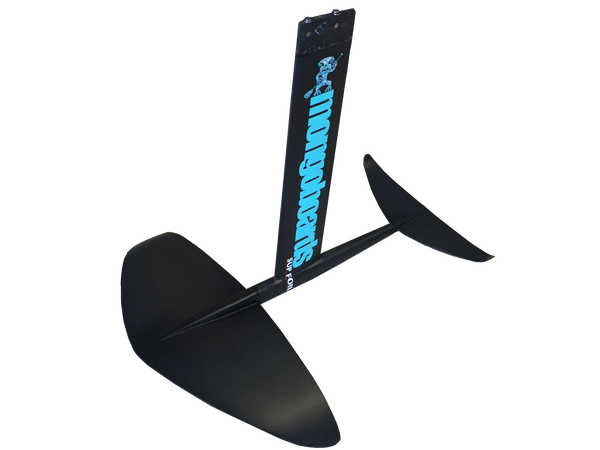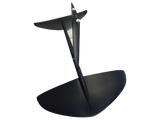The face of SUP surfing has changed!! Imagine a world where you can ride 365 days of the year. A World where even the smallest waves gives you enough power to have incredible sensations. SUP FOILING is that world.
SUP Foiling is a revolution in the Sup world as you only need tiny waves to have amazing sessions.
A full Carbon Fibre Foil with a reversible back wing that can be positioned either up or down. The MongoSUP Foil is selling well below the going rate, at $1690 this is half the price of the big name competitors.

Choosing Correct Size Stand Up Paddle Board.
The answer to this question will be based on your weight and paddle boarding experience. Think of your ideal board size in terms of volume. The wider, longer and thicker the board, the more volume it will have. In fact, the more volume the board has, the more stable it will be on the water.
The overall buoyancy of a stand up paddle board or SUP is affected by its length, thickness and width. It is listed as board volume and is measured in litres.

- LENGTH
A longer board will generally go faster and straighter. With a longer board, you’ll get more paddle strokes per side before you have to cross over to the other side to keep the board going straight.
- THICKNESS
This can add volume to a board without adding extra length or width. Too much result’s in the board sitting above the water and too little will cause the board to sit too deep in the water. Keep in mind, the ocean has more buoyancy than freshwater lakes and rivers.
- WIDTH
A wider board will feel more stable but will glide slower. A narrower board will glide faster but can become unstable in windy/choppy water. Width can add necessary volume but at the cost of performance. 30” wide is a good starting point.

It’s important to select a board with enough buoyancy to float your body weight sufficiently because the lower the board sits in the water the less stable it becomes. A lighter person will float higher and therefore be more stable than a heavier person
Recommended SUP Volume Chart
Beginner: 200% of your body weight in (kg) e.g. 70kg x 2 = 140L (litres)
Intermediate: 170% of your body weight in (kg) e.g. 70kg x 1.7 = 102L
Advanced: 130% of your body weight in (kg) e.g. 70kg x 1.3 = 91L
This table should only be used as a guide. For further information and a more approximate volume please call Mick or Alice on 0450080566. Experience, and conditions will affect these numbers.










